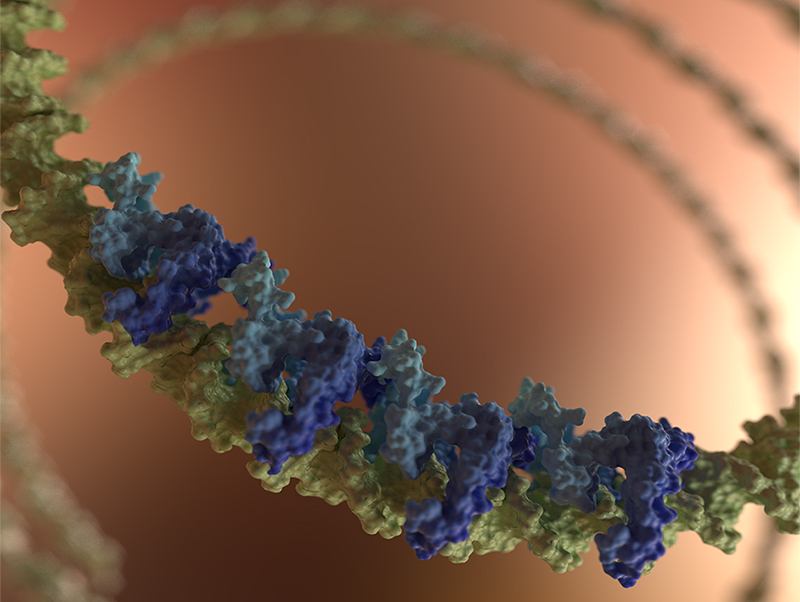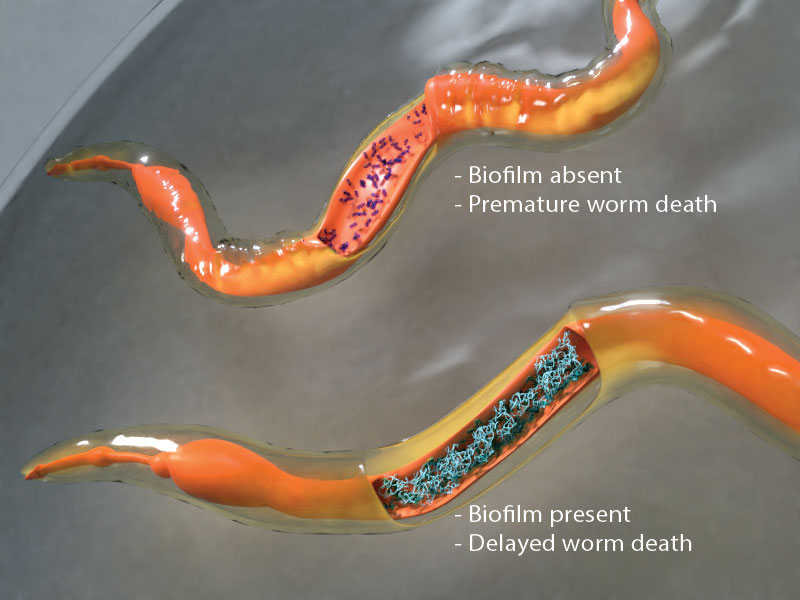Multicolor Super Resolution Imaging
Sci Comms | November 2015
An invited Biophysical Perspective integrates these findings, and highlights the role of H-NS proteins in bacterial nucleoid compaction and the implications for its gene-silencing functions. [Winardhi RS et al. H-NS regulates gene expression and compacts the nucleoid: Insights from single molecule experiments. Biophysical Journal. 2015. 109. 1321-1329].
A gene-silencing nucleoprotein filament formed by H-NS family proteins
Deoxyribonucleic acid or DNA, one of the major macromolecules found in cells, is considered the blueprint of life. It contains all the information required to carry out cellular activities and sustain life in every living organism, from the simplest bacteria to highly evolved humans. In bacteria, DNA is organized into a structure called a nucleoid, which is accomplished by the action of nearly a dozen of abundant DNA-binding proteins known as nucleoid-associated proteins (NAPs). NAPs also dynamically influence gene transcription globally. Thus, NAPs play two important roles: nucleoid organization and transcription regulation. A better understanding of the DNA-binding properties of NAPs will provide crucial insights into the mechanisms underlying the function of these bi-functional proteins.
The H-NS family of NAPs belongs to a set of proteins widespread in gram-negative bacteria, executing a special function as global gene silencers and playing critical roles in bacterial pathogenesis. A research team from the MBI, comprised of Principal Investigators Yan Jie andLinda Kenney, and several team members including the current post-doctoral fellow Ricksen Winardhi, has been working together for several years to understand the relation between DNA binding and the gene-silencing mechanisms of H-NS proteins. Based on accurate measurements using advanced single-molecule manipulation and imaging methods, this collaboration has led to a discovery that a rigid nucleoprotein filament formed by H-NS proteins on double-stranded DNA provides the basis for their gene silencing activity.
The discovery of H-NS nucleoprotein filaments supplies a structural basis for understanding its gene silencing function. It also enables an understanding of how H-NS mediated gene silencing can be relieved by a set of anti-silencing proteins to activate transcription. These findings have led to more than ten publications that have made a significant impact on the field. An invited Biophysical Perspective integrates these findings, and highlights the role of H-NS proteins in bacterial nucleoid compaction and the implications for its gene-silencing functions. [Winardhi RS et al. H-NS regulates gene expression and compacts the nucleoid: Insights from single molecule experiments. Biophysical Journal. 2015. 109. 1321-1329].









